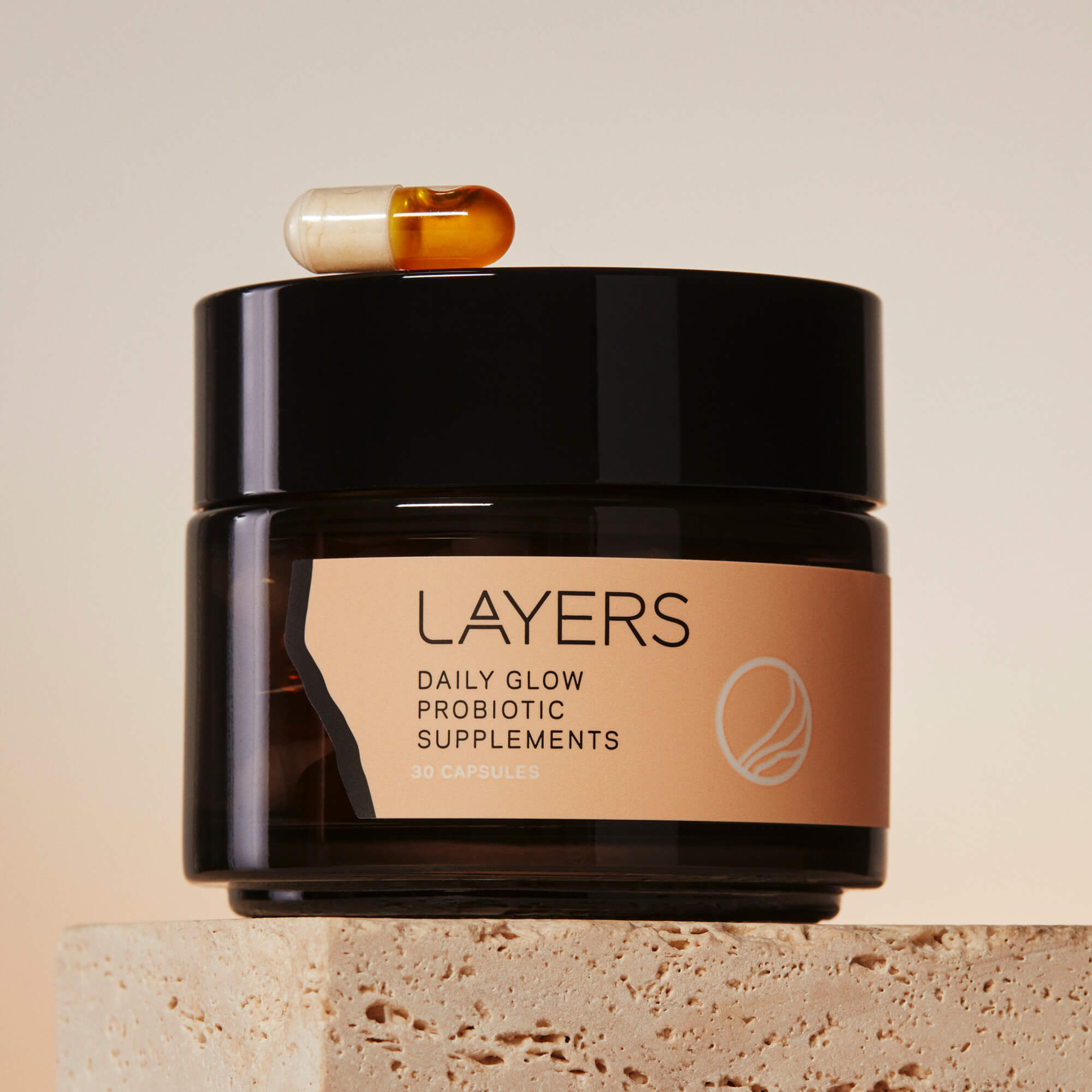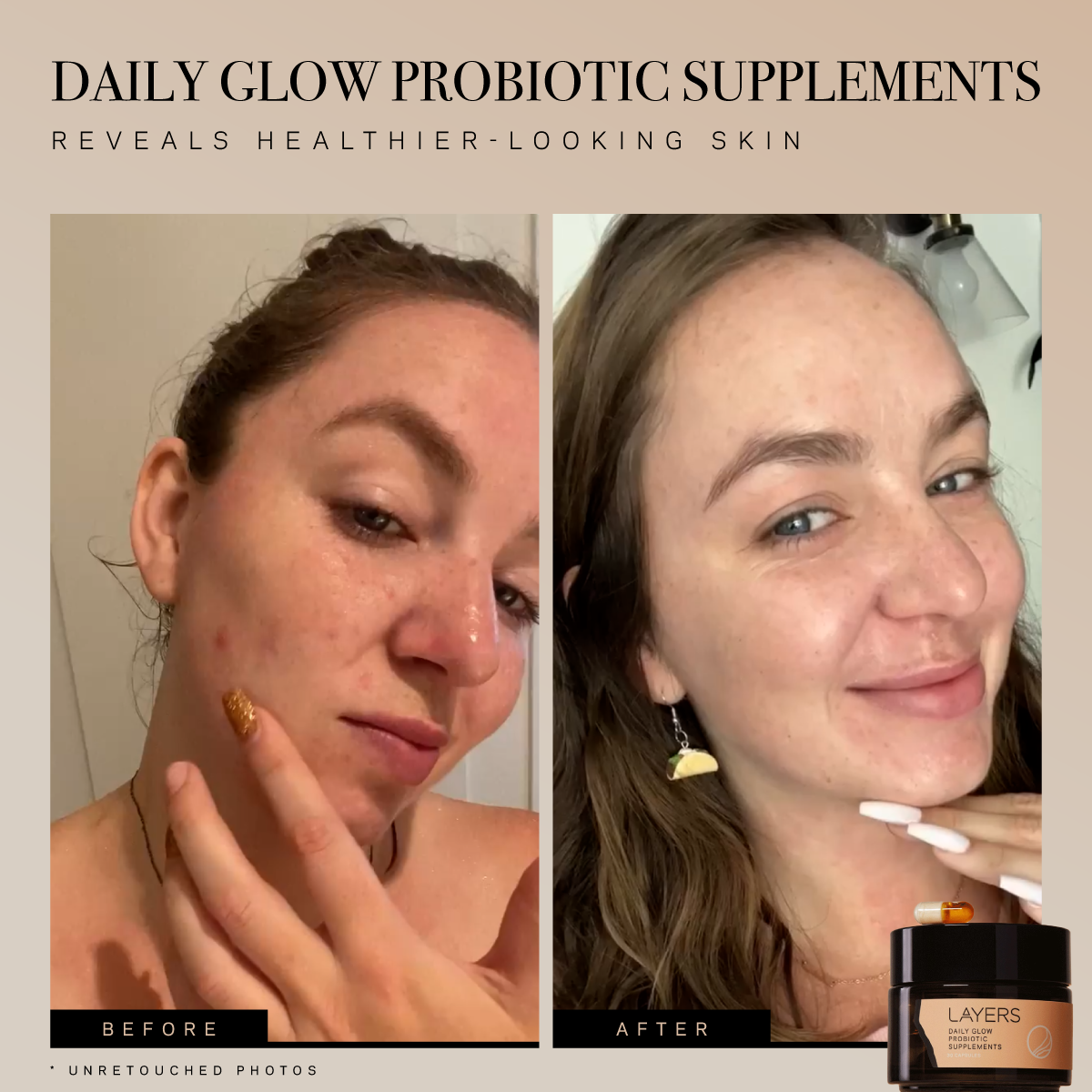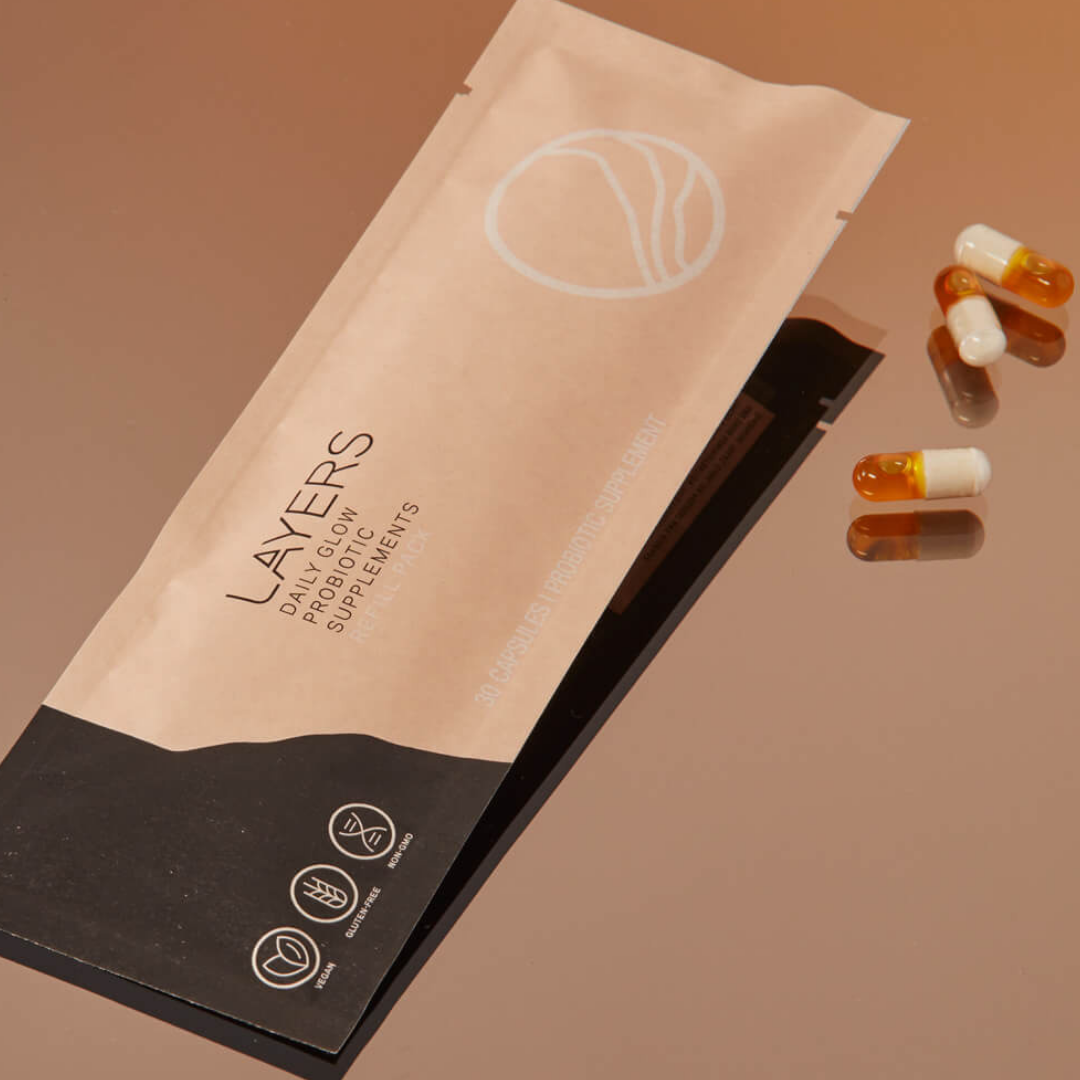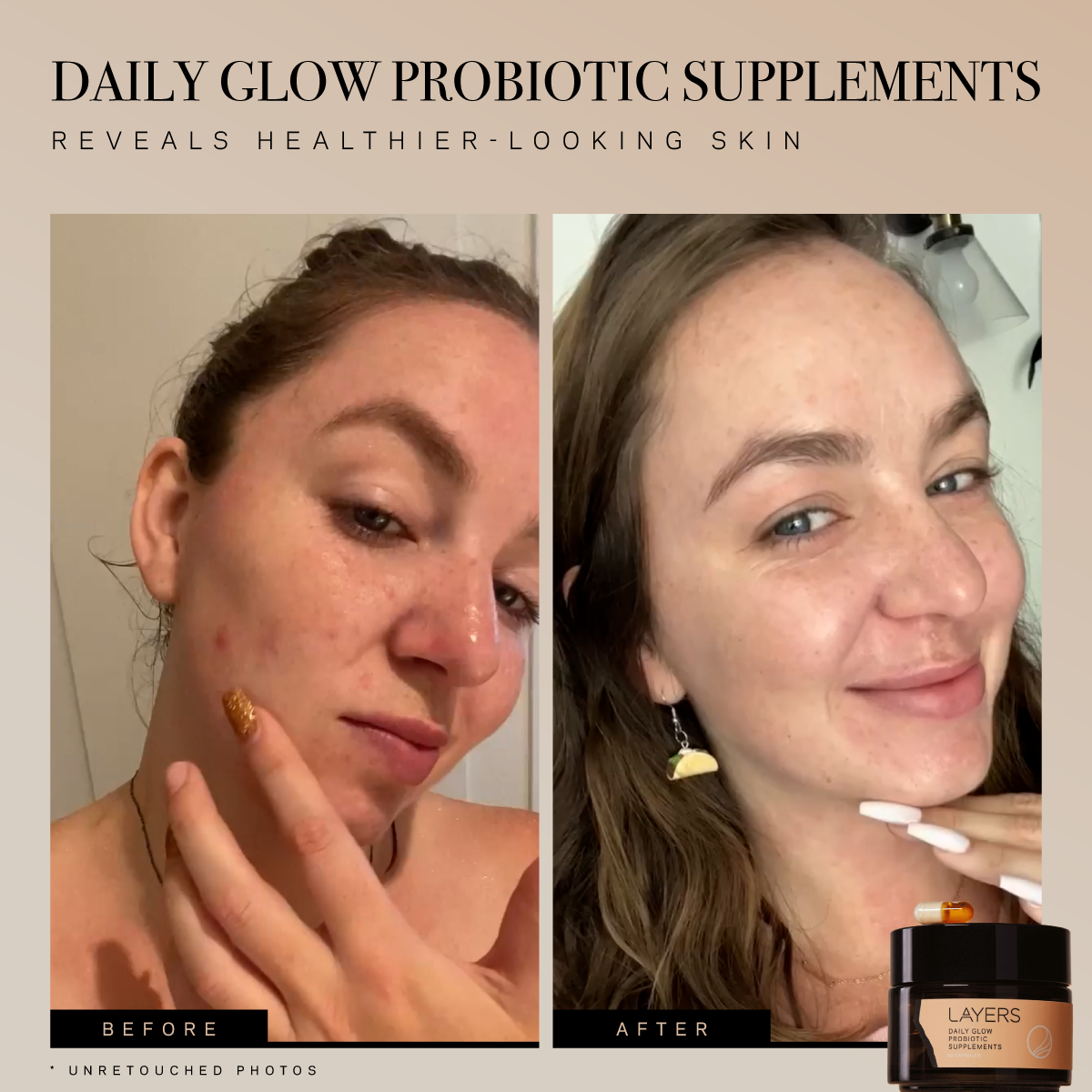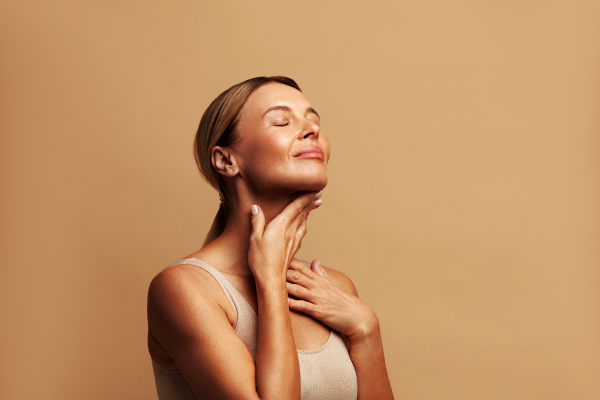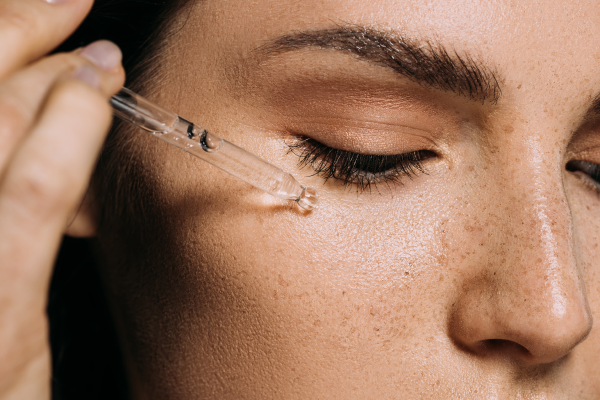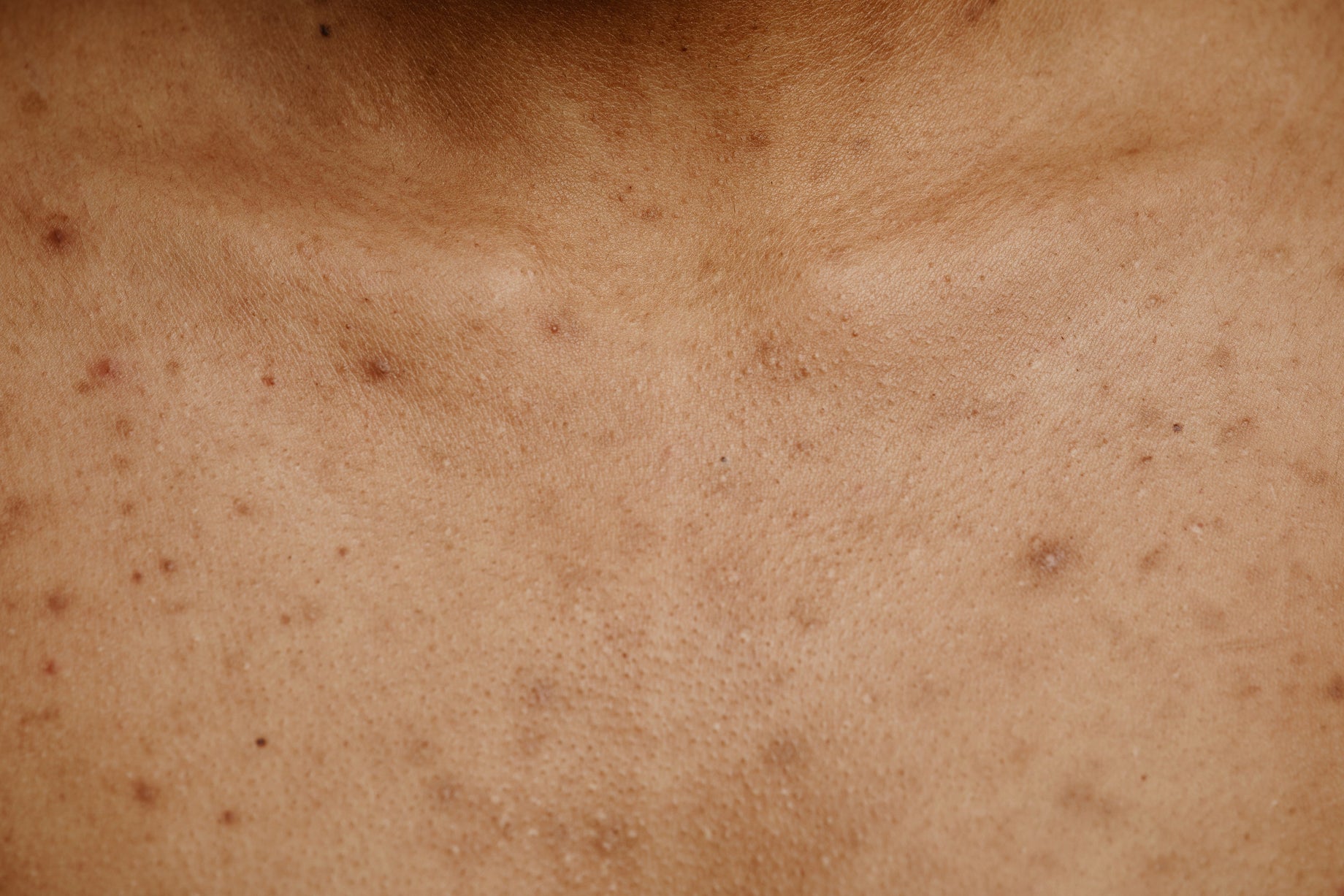Acne can give you the blues at any age and always in the worst moments. But there’s new research helping us understand the role of the microbiome. Here’s what you need to know to improve the health of your skin - and maybe even kiss acne goodbye forever.
When unwelcome visitors suddenly pop up out of nowhere, it inevitably throws our plans out of whack. Especially when those visitors come in the form of red and inflamed bumps…on your face. Acne is an absolute nightmare to deal with, and if you’ve been there, you likely have the scars to prove it.
This unfortunate skin malady has been putting the dimmer on high school dances, ruining first dates, and wreaking havoc on confidence levels for eons. And It makes you wonder, with so many test cases and decades of dermatological science trying to tackle the problem, why do so many of us still suffer from it?
WHAT IS ACNE, EXACTLY?
You most definitely know what it looks like, but what’s really going on under the surface? Acne doesn’t just choose a random spot to set up camp. It all starts with a tiny hair follicle. Hair follicles are microscopic tubes, and they can clog easily (talk about a design flaw). Underneath those follicle tubes are sebaceous glands that secrete an oil called sebum. Sebum helps keep our skin and hair moisturized.
Hormones called androgens direct sebum traffic, and androgens increase during puberty. So this teenage androgen party fires the signal for more sebum to be produced. The problem arises when traffic through the hair follicle tube gets backed up. When produced at a normal rate, no problem.
But when the androgens are up their wild, adolescent ways, all of that excess sebum collides with the natural shedding of dead skin cells. On top of that, overworked follicles are trying to deal with dirt, bacteria, germs, and air pollution from the outside. So what we end up with are big, backed-up hair follicles that reach their breaking-out point. The backup causes inflammation and postules that fill with the sebum known as whiteheads and blackheads.
ACNE: HERE’S WHAT WE KNOW
Based on the acne-fighting industry that’s built up around it, it’s pretty clear that this is an epidemic. Statistics show that between 79% and 95% of adolescents experience some form of acne. The most common canvases are the face, neck, back, and chest.
For a long time, the reason provided for breakouts has primarily pointed the finger at hormones. Historically, those who suffer the worst of it are from the ages of 14-19, coinciding with puberty. But that age range has been expanding in both directions.
Kids from the ages of 7 to 12 are experiencing acne due to early onset puberty. The prevalence of adult acne is also on the rise. One study followed 1,013 men and women with adult acne. It showed that women suffer the worst of it, with 50.9 percent dealing with it into their 20’s, 35.2 percent in their 30’s, 26.3 percent in their 40’s, and 15.3 percent still trying to fight off acne into their 50’s.
A BIG DISCOVERY IN DERMATOLOGY
Interestingly, those statistics only apply to Westernized societies. A groundbreaking study from 2002 focused on the prevalence of acne among the Kitavan Islanders of Papua New Guinea and the Aché hunter-gatherers of Paraguay. A total of 1,315 people were studied over the course of 843 days. And guess what? Not a single case of acne was observed among any age group. Nada.
Previous science tended to look at genetics alone as the culprit. But what this study focused on was the holistic environmental factors that also seemed to play a significant role. If puberty wasn’t entirely to blame, what was it about Western society that made acne so prevalent?
ENVIRONMENTAL FACTORS
Way back in 1971 when Marvin Gaye, The Jackson 5, and Led Zeppelin were topping the charts, something else was happening north of the border. The Canadian government was pushing the Inuit Eskimo people away from their traditional nomadic lifestyles and into a more modern, settled life.
Fortunately, a doctor by the name of Otto Shaeffer thought it would be wise to document the changes in their people as they adjusted to this new way of living. Over 30 years, he observed an increase in disease, early onset puberty, dental complications, and you guessed it, the prevelence of acne among a population that had no prior history of it before acculturation.
ACNE, THE MICROBIOME, AND YOUR ENVIRONMENT
Inspired by Shaeffer’s 1971 observations of the Inuits, the team behind the 2002 study made environmental factors the backbone of their research. Environmental factors include things like:
-
Climate
-
Dietary trends
-
Socioeconomic conditions
-
Cognitive stimulation
-
Healthcare
-
Pollution
-
Social/Relationship factors
-
Stress
In all aspects of the above, tribal societies operate very differently than modern civilizations. And when it comes to our overall health and quality of life, modern isn’t always better. Economic inequality, lack of access to healthy foods, and poor quality of healthcare are all contributing factors to the increased levels of stress that come with modern living.
While ditching modern society sounds like an adventure in the short term, for all but the most extreme survivalists among us, it’s not a long-term solution. Imagine how long it would take you to gather all those coffee beans for your morning latte and whittle a cup out of bamboo…thanks but no thanks. There are, however, things you can do to protect yourself from the pitfalls of modernity.
HOW TO STRENGTHEN YOUR MICROBIOME AND FIGHT ACNE
Your microbiome is a collection of bacteria, fungi, microorganisms, and viruses that protect you and interact with the environment around you. These are both internal and external, from the interior of your gut to the skin barrier that covers you. As our understanding of the relationship between the various flora that make up these communities increases, so does our ability to influence it for the better.
Focus on Diet
Your gut is like the Grand Central Station of your body. Whatever content you’re sending in there directly affects everything else, including your complexion. More and more studies are connecting the dots between gut microbiota and acne. Fresh, seasonal, whole foods are central to a flourishing gut microbiota, as demonstrated by our acne-free tribal counterparts.
If you can’t totally avoid the sweet and highly caloric trappings of the modern world, research does point to the main culprits. Certain foods have demonstrated a direct relationship to the formation of acne, so cut back where you can on the following:
-
Excess sugar (including soft drinks)
-
Dairy
-
Dark chocolate
-
Foods that are high on the Glycemic Index
-
Greasy, fatty foods
Ps- For dietary tips and a few fun recipes, we’ve got you covered!
Practice Pollution Protection
Everything from car exhaust to microparticles to cigarette smoke qualifies as pollution, and all of it affects your skin. If you live in a crowded city, you’re much more at the mercy of environmental factors. Tribal societies didn’t have to contend with these types of pollution, and it showed in their skin.
But there is something you can do to combat this pollution. Skincare that fights free radicals exists! Topical probiotics can help support your immune function by reinforcing your microbiome health. Oral probiotics can support your gut and the gut-lung axis. Lactobacillus Plantarum, one of the strains in our Daily Glow Probiotic Supplements, has been shown to lower the levels of cadmium accumulated through cigarettes and second-hand smoke.
Minimize Stress
Life ain’t always a bed of roses. We get it. But it’s the journey we’re on and bumps along the road are inevitable. Whether it’s an unexpected (read: expensive) car breakdown, losing a job, or splitting hairs over a fight with a partner, we can’t control when things don’t go our way. But we can control how we react to them.
When it comes to acne, stress is a really, really bad actor. Stress increases your levels of the hormone cortisol, and that leads to inflammation. So find healthy ways to relieve stress, like yoga and exercise. Take a 10-minute break to walk or stretch if you’re having a tough day at work. Follow a meditation practice or just sit in silence for a few minutes every day. These minutes add up, and they really can help you cope with life’s stressors.
Use Anti-Inflammatory Skincare
One of the contributors to a complexion that’s all up in flames could be sitting on your bathroom counter right now. Busy labels with chemical-laden formulas are simply too harsh for your skin.
Here’s a short list of ingredients to avoid in your skincare routine:
-
aluminum
-
formaldehyde
-
phthalates
-
Oxybenzone
Instead, seek out anti-inflammatory skincare ingredients. Become an avid label reader and say “Yes!” when you find these ingredients listed:
-
Niacinamide
-
Green Tea
-
Aloe Vera
When it comes to acne, our modern way of life doesn’t help the situation. But it’s not hopeless. Learning to support your microbiome health through diet, stress relief, using anti-inflammatory skincare, and taking a daily probiotic are easy ways to combat the effects of the world we live in. Support your microbiome and before you know it, your skin will start showing you the difference.

